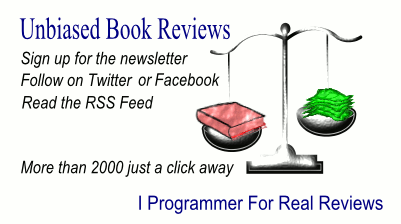| Formulas and Functions: Microsoft Excel 2010 |
|
Author: Paul McFedries This is a cross between a how-to and a theory book. Can it deliver on its promises? Author: Paul McFedries This book isn't intended for the beginner or the casual user of Excel. The target user is "the business user who needs to use Excel as an everyday part of [their] job". Although Excel 2010 is mentioned in the title there is no discussion of its ribbon interface, nor any mention of new features, so it can't be recommended as a solution to upgraders who are feeling overwhelmed by the difference from Excel 2003 and earlier. The fact that there are no sample worksheets available might also reduce its attractiveness to practically minded readers. And as pointed out at the beginning, you are not expected to read it from cover to cover but rather to dip into it. According to the book's front cover his book will show you how to:
All this sounds very worthwhile and these topics are covered but there's quite a lot more besides. Part I: Mastering Excel Ranges and Formulas starts with two chapters on name ranges. This is an important topic but not one normally considered a starting point. Cell references - which logically come before ranges - are covered in Chapter 3, Building Basic Formulas which also introduces operator precedence. Chapter 4, Creating Advanced Formulas opens with working with arrays and array formulas - but left me with more questions than answers about when to prefer array formulas to entering one and copying it to a range. This part ends with Troubleshooting Formulas which also includes auditing worksheets. Part II: Harnessing the Power of Functions starts with a short introductory chapter, Understanding Functions, and then has a chater on working with each of the following categories: text, logical/information; lookup; date and time; math; statistics. Most of these chapters include a Case Study - a practical demonstration using a real world example. Case studies are also used throughout the remaining two parts - Part III, Building Business Models and Part V Building Financial Formulas. For me Part III was the strongest section in the book. Each of its five chapters seemed focused and practical: 13 Analyzing Data with Tables; 14 Analyzing Data with PivotTables; 15 Using Excel's Business-Modelling Tools (covering What-If Analysis, Goal Seek and Scenarios); 16 Using Regression to Track Trends and Make Forecasts; 17 Solving Complex Problems with Solver
The final part returns to functions, Excel's' financial functions - with three short chapters relating to loans, investments and discounts. This is an interesting book that is part "how-to" and part an explanation of the principles behind the calculations. If you are looking for a very basic book that simply tells you what to type in then you will find this book less than suitable. If on the other hand you want to know how to do a range of financial and business calculations then you will find it useful.
|
|||
| Last Updated ( Monday, 29 November 2010 ) |
